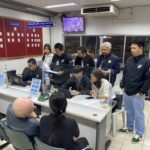Space tourism sounds like science fiction, but in 2026, it is a real market. Tourists can book short rocket hops, multi-day orbital missions, or even a high-altitude balloon ride with a picture-perfect view of Earth. Companies like SpaceX, Blue Origin, Virgin Galactic, Space Perspective, and Axiom Space are selling seats. Tickets are still very expensive, and only a small share of people can go.
This article explains space tourism in plain language, then weighs what it costs and what it might give back to society. It looks at money, climate impact, fairness, safety, innovation, jobs, and inspiration. Public opinion is mixed. Some see progress, others see waste. It closes with a simple checklist to help readers judge whether it feels worth it for them and for the public.
What Is Space Tourism in 2025 and How Does It Work?
Space tourism means paying for a trip beyond normal air travel to see Earth from high above. A traveler meets a crew, completes training and safety briefings, gets medically checked, and rides a vehicle to a high altitude. They see the dark sky, the curve of Earth, and a thin blue atmosphere. On some trips, they float in microgravity for a few minutes. On others, they orbit the planet for days.
After the flight, passengers return to a landing site or splashdown zone. Many packages include photos or video, and some offer a short recovery experience with family or media access. The whole process is planned and rehearsed to minimize risk and confusion.
Types of trips: suborbital, orbital, and stratospheric balloon
There are three main kinds of trips in 2025. The differences come down to time, altitude, and training.
- Suborbital flights: Riders go above the edge of space for a few minutes, then come back down. They experience several minutes of weightlessness and a clear view of Earth. These flights are short and use either a rocket or a spaceplane. They make up about 60 percent of the market today, since they are more frequent and usually cheaper than orbital flights.
- Orbital flights: Travelers circle Earth at high speed, staying in space for days. Some missions visit the International Space Station. Others orbit independently in a capsule. Training is more involved, and the price is much higher. These trips include sleeping in space, eating pre-planned meals, and using special toilets designed for microgravity.
- Stratospheric balloon rides: A pressurized capsule hangs beneath a giant balloon and rises to the stratosphere. It does not reach space, but the view is dramatic. Passengers see the darkness of space and the curved horizon. The ride is gentler, with more time to look out large windows, and usually needs less training.
A quick comparison helps set expectations.
| Trip Type | Typical Altitude | Time in Flight | Time Weightless | Training Needed | Market Share Today |
|---|---|---|---|---|---|
| Suborbital rocket/plane | ~80–100 km | ~10–15 minutes | ~3–5 minutes | Short | ~60% |
| Orbital capsule | ~400 km | Days | Continuous | Moderate to high | Smaller |
| Stratospheric balloon | ~30 km | Hours | None | Short | Growing niche |
Who are the key players and what do they offer?
- SpaceX: Orbital trips in Crew Dragon, multi-day missions, private ISS visits, and plans for future lunar flybys.
- Blue Origin: Suborbital rocket hops with New Shepard, minutes of weightlessness and high views.
- Virgin Galactic: Suborbital spaceplane rides to the edge of space.
- Space Perspective: High-altitude balloon capsule experiences in the stratosphere.
- Axiom Space: Private orbital missions to the ISS, arranged with partners like SpaceX, and private station plans.
Future missions may include trips around the Moon. Those remain rare and costly, and they require more training and tight schedules.
How much does it cost and why might prices drop?
Tickets range from hundreds of thousands of dollars to many millions. Suborbital seats usually cost less than orbital stays. Stratospheric balloons sit in between for some providers, or lower when compared with rockets, since they use less propellant and simpler flight profiles.
Prices could drop over time if companies reuse rockets and capsules more often, compete for customers, and roll out new vehicles that carry more passengers. Training, medical checks, travel, clothing, insurance, and post-flight events can add to the total bill. No one can promise when prices will fall, or by how much, but more flights usually bring some cost relief.
The Real Cost: Money, Climate, and What We Give Up
Cost is not just the ticket. It is also the fuel burned, the carbon released, the public resources used, and the other choices that money could have funded. A clear view of the tradeoffs helps people judge the value without hype or hostility.
Ticket price vs value: what buyers actually get
A space tourism seat often includes:
- Pre-flight training and safety briefings
- A medical screening and sometimes a fitness plan
- Flight suit, seat assignment, and window access
- The flight itself, with guidance from trained crew
- Post-flight recovery, media assets, and memorabilia
A higher price usually buys more time aloft or a more complex mission. Orbital trips cost far more than a brief suborbital hop because they require more propellant, more life support, and extended crew support. A private mission to orbit might include research time, custom meals, upgraded communications, and a longer training period.
It is similar to the difference between a scenic helicopter tour and a multi-day yacht charter. Both provide a view, but the depth and complexity are not the same.
Environmental impact: rocket emissions and greener tech
Rockets burn fuel at high altitude, where emissions can have outsized effects. Some engines produce black carbon, which warms the atmosphere when it absorbs sunlight. Other engines release water vapor and carbon dioxide. The total climate impact varies by fuel type, engine design, and how often flights occur.
Companies and researchers are working on greener approaches. Ideas include:
- Switching to fuels with lower soot production
- Improving engine efficiency to use less propellant
- Designing vehicles that fly more people per launch
- Using cleaner ground operations and sustainable power at spaceports
Balloon flights have a different profile. They reach lower altitudes than rockets, and they do not burn rocket propellant during ascent. Their footprint can still include manufacturing, helium or hydrogen sourcing, and recovery operations. The full picture depends on the full life cycle, not only the hours in the sky.
Claims about impact should be careful and specific. A small number of launches will have a small footprint compared with global aviation. A surge in launches could create a larger effect, especially if soot increases in the stratosphere. Transparent reporting would help the public judge progress.
Opportunity cost: could this money solve problems on Earth?
Space tourism uses big budgets. Those funds could support clean energy, schools, clean water, or health care. Critics argue that luxury trips during a climate crisis feel out of step with public needs.
There is another side. The industry hires engineers, technicians, pilots, welders, and suppliers. It drives research in materials, sensors, and life support. It can reduce launch costs for satellites that track wildfires, storms, and crops. Some private missions carry experiments that would not fly otherwise.
Ethics sit in the balance. People can hold two ideas at once. It is fair to ask wealthy travelers to invest back into Earth through philanthropy, offsets, or science sponsorships. It is also fair to value innovation that may lower costs for important space services.
The Upside: Innovation, Jobs, and Science Gains
Space tourism is not only postcards and selfies. It can push practical progress that spills into other sectors. The benefits are real when tied to actual results and not just big promises.
Faster innovation: reusability, life support, and safer systems
Tourism demand pressures companies to fly more often and bring vehicles back for reuse. Frequent flights help teams learn faster and fix problems early. Advances that help tourists can help other missions too.
- Reusable rockets and capsules lower launch costs for satellites.
- Better life support improves air quality and water recycling on space stations.
- Upgraded abort systems and parachutes improve safety for every crew.
These gains support weather satellites, emergency communications, and disaster mapping. Better space infrastructure can speed aid after storms and wildfires. What starts as a tourist flight can feed a more resilient orbital network that benefits people on the ground.
Jobs and local economies around spaceports
Spaceports and training centers spark local hiring. The effects are spread across:
- Engineering, manufacturing, and testing
- Flight operations, safety, and medical teams
- Hospitality, events, and transportation
- Education programs and visitor centers
Hotels fill when launch windows open. Restaurants see bursts of customers on flight days. There are downsides too. Some regions face seasonal swings, high rents near the spaceport, or noise and traffic on launch days. Smart planning can help communities share the upside without carrying all the costs.
Science and education: more access to experiments and learning
Private missions often carry small experiments that need microgravity. Schools, startups, and research labs can buy space in a capsule or station. This gives more people hands-on time in space, which was once limited to government programs.
Students benefit from live streams and recorded footage. Seeing Earth from above can shape long-term interests in science and Earth stewardship. Educators can use flight data, video, and crew talks to make physics and climate science more vivid.
Is Space Tourism Worth the Cost? An Ethical Framework
Worth is not a single number. It blends values, risks, benefits, and fairness. A clear framework helps people make sense of the debate without getting stuck in extremes. Public opinion remains mixed, and that is reasonable given the tradeoffs.
Fairness and access: who gets to go and how to broaden it
Right now, most seats go to wealthy travelers and sponsored guests. That raises fair questions about who benefits from shared airspace and public launch ranges. Steps that can broaden access include:
- Scholarships funded by companies and passengers
- Seat lotteries with clear rules and safety screening
- Citizen scientist roles tied to real experiments
- Education partnerships that give classroom access to live missions
These options do not fix inequality, but they move the industry toward shared benefits. When more people see value, public support grows.
Safety, risk, and informed consent
Spaceflight carries real risk. Training reduces risk, but never to zero. Clear safety records, transparent briefings, and honest risk communication matter. Customers should see:
- Vehicle reliability data and maintenance practices
- Crew training standards and emergency procedures
- Insurance options and medical requirements
- Independent oversight or certification where available
A strong safety culture is visible. It shows up in how teams talk about near misses and how they handle delays. A delay for safety is a good sign, not a red flag.
Rules and responsibility: protecting Earth and orbit
Standards guide how companies fly and how often. Rules can include emissions reporting, debris mitigation for any orbital hardware, launch cadence limits to protect wildlife, and noise controls. National regulators set licenses and safety rules. International cooperation helps keep orbits usable for all.
Simple actions can build trust:
- Publish environmental footprints and offset plans
- Share debris prevention plans and tracking data
- Coordinate launch schedules with local communities
- Fund habitat protection near spaceports
Good rules protect both the sky and the ground.
A simple checklist to decide if it is worth it
A practical decision tool helps individuals and communities judge the trade:
- Personal goals: What does the traveler hope to gain or contribute?
- Budget and financial safety: Can they pay without harming long-term security?
- Environmental footprint: What is the flight’s impact and what offsets or donations will be made?
- Transparency and safety record: Does the company share data and welcome oversight?
- Science or education benefit: Will the trip support research or learning?
- Risk tolerance: Is the traveler comfortable with the remaining risk?
Values and facts both matter. The right answer will differ by person and by community.
Conclusion
Space tourism is growing fast. Seats remain very expensive, although more flights and reusable vehicles may lower prices over time. The ethical questions around climate impact and fairness will not fade. At the same time, the sector supports innovation, jobs, and new science that can serve people on Earth.
Signals to watch in the next few years:
- Ticket price trends across suborbital, orbital, and balloon trips
- Greener fuel milestones and transparent emissions reports
- Stronger safety standards and third-party audits
- Clearer rules for debris and launch impacts on communities
- Wider access through scholarships, lotteries, and education programs
A smart verdict blends heart and head. The awe of seeing Earth from above has value, yet so does care for the planet and fairness on the ground. If those priorities move together, space tourism can become worth the cost for more people, not just a select few.















